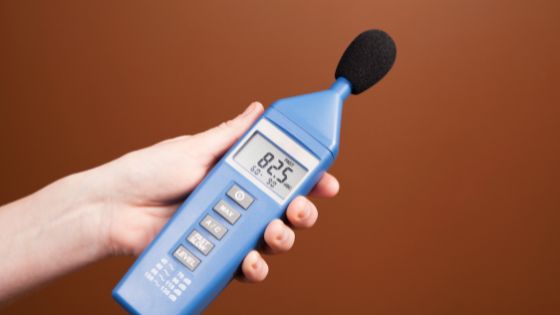Noise Survey Definition
A noise survey refers to the complex methods of measuring sound using equipment and machines like type-1-sound level meters, external environmental microphones, and low microphones. A noise survey also involves the preparation of a noise or sound report of the work environment.
The following is a brief description of the major forms of noise surveys:
Risk Evaluation Of Occupational Noise Levels
UK law mandates all industrial establishments to adhere to noise control requirements in the workplace. One of the main objectives of an occupational health survey is to evaluate and regulate the level of sound or noise employees are exposed to at their workplace.
One of the most significant advantages of noise risk assessment is safeguarding the health and hearing ability of the staff members. Exposing your employees to high noise levels above 80B(A) for an extended period damages their hearing and necessitates implementing noise or sound control measures in the workplace.
If the staff members are exposed to 85dB(A), the employer must undertake noise surveys and risk assessment studies in compliance with the law. In some instances, additional measures like health screening, hearing protection, and hearing tests may be required to safeguard employees’ health.
The best way to regulate noise levels is to work with noise or sound survey experts like Orbis Environmental and Safety. During the survey, the professionals come to the site to evaluate the existing measures and provisions set up to safeguard the hearing ability and well-being of the employees from extremely high noise levels.
At the end of the site visit, we prepare a detailed report showing the various sources of the noise, the noise or sound levels, and all the professional recommendations to conform to the regulations.
A Survey of Workplace Background Noise
The main objective of background noise surveys is to assess the everyday noise variation in a given area. This survey is a local authority required to ensure a new establishment in a site is not producing too much noise or is not negatively affected by the existing noise levels in the area.
To conduct a background noise survey, you must complete several spot measurements. To get an accurate and comprehensive assessment, we advise allowing the measuring equipment to sit and gather data on site for several days.
A comprehensive survey shows the different types of sounds in a given area, such as diurnal variations and choruses or the fleeting noise from boiler flues. Ordinarily, these types of noise are difficult to assess using other techniques. For more info, check out Auricl Noise Consultants.
Evaluating the Noise Impact
The scope of a noise impact assessment is similar to a more detailed noise assessment that is not constrained to an ordinary background noise survey.
You will need a noise impact assessment when seeking planning approval. In addition, local authorities ask for a noise impact assessment to determine the impact of a proposed development project.
A noise impact assessment includes evaluating the background noise levels in the environment compared to the estimated noise levels generated by the planned project.
Suppose the survey shows the proposed development adds to the existing noise sources. In that case, the project planners must develop measures to alleviate the internal and external conditions without burdening the nearby noise sources in any different and irrational way.
Noise Impact Assessments help in evaluating the existing noise levels.
All industrial companies are expected to maintain a reasonable noise generation level to comply with the law and maintain friendly neighbourhood relations with other people.
All industry players must abide by the law by maintaining low noise levels and safeguarding the health of their neighbours.

















